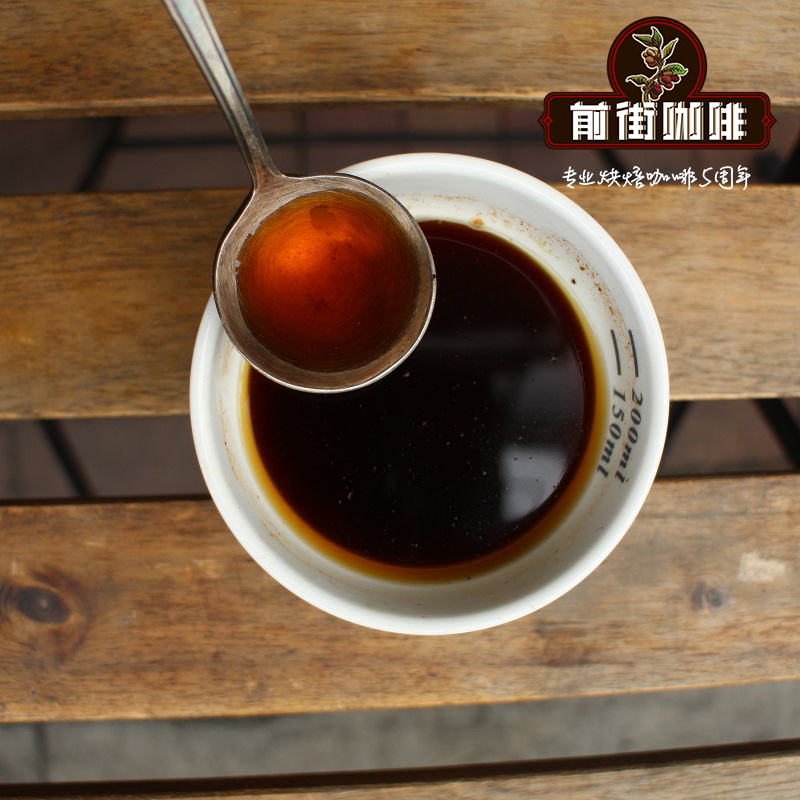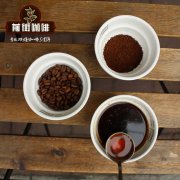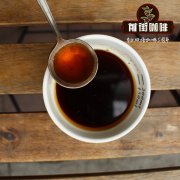Jasmine-flavored Ethiopian Guji Coffee beans-cultivation of washed beans on a single Farm in Kayong Mountain

Professional coffee knowledge exchange more coffee bean information please follow the coffee workshop (Wechat official account cafe_style)
Jasmine-flavored Ethiopian Guji Coffee beans-the planting Story of washed beans on a single Farm in Kayong Mountain? How to cook it by hand?
Founded in 2012, Kayon Mountain Farm Farm is located in the town of Odo Shakiso District in the Guji Zone district of Oromia State in southern Ethiopia, about 516km from the capital Addis Ababa. The total area of coffee cultivation is about 300ha, and the elevation is about 1900 to 2200 meters. Coffee trees grow in a forest shaded by many big trees, and the soil is clay loam. Because Guji District maintains the culture of traditional agricultural ecology, it does not destroy the ecological environment because of planting, so that the area still maintains a large amount of forest land, thus improving the quality of coffee. Of the 300 hectares of planting land, 240 hectares are fully forested, and another 150 hectares of farmland in Kaiyong Mountain is located in the village of Sawana in the town.
Founded in 2012 by Ato Esmael and his family, the Kayong Mountain single Farm covers an area of about 300 hectares, of which more than 200 hectares are still in pristine reserved forest. The selected seat at Kayong Mountain Farm is located in the elite Shaquiso producing area of Guji (Shakisso/Shakiso), more than 500 kilometers from the capital, Addis Ababa. The seat of Guji producing area is actually on the east side of Yega Schiffe, but the part next to Yega Chevy is the Hambela producing area. If you want to go to Shachiso, you usually don't go through Yega Chevy, but travel south from the capital to the town of Yirga Aleam after about six hours, abandon the road on the right to Yega Chet, turn into Highway 82 on the left, and go all the way southeast. It will take about four hours to reach Shaquiso (N 5 °46 & # 39). 21 "E38 °54 & # 39TIX", about 1730m above sea level.
Country Ethiopia (Ethiopia)
Producing area Oromia Region
Guji (Guji Zone)
Shaquiso (Shakisso Woreda)
Processing plant Kaiyong Mountain Manor has its own processing plant Kayon Mountain
Producer Ato Esmael
1900-2200 meters above sea level
Variety Ethiopian ancient variety (Heirloom)
The annual rainfall is about 1200-1400 mm
Treatment water washing, African scaffolding drying
Sun drying of African scaffolding
Founded in 2012, Mount Kaiyong Farm (Kayon Mountain Farm) is located in the town of Odo Shakiso District in the Guji Zone district of Oromia State in southern Ethiopia, about 516km from the capital Addis Ababa. The total area of coffee cultivation is about 300ha, and the elevation is about 1900 to 2200 meters.
Coffee trees grow in a forest shaded by many big trees, and the soil is clay loam. Because Guji District maintains the culture of traditional agricultural ecology, it does not destroy the ecological environment because of planting, so that the area still maintains a large amount of forest land, thus improving the quality of coffee. Of the 300 hectares of planting land, 240 hectares are fully forested, and another 150 hectares of farmland in Kaiyong Mountain is located in the village of Sawana in the town.
Kaiyong Mountain Farm has BCS Eko garantie organic certification and obtained an export license for 16 years in 2015. In an environment with an average daily temperature of 30 degrees Celsius, an average night temperature of 15 degrees Celsius, and an average annual rainfall of 1,200murmur1400mm, Kayo staff take good care of the Ethiopian native species and Tibica coffee trees on the farm, with an average of 400 coffee trees and banana trees planted on the farm. The coffee harvest period at Kaiyong Mountain Farm is from October to January of the following year.
There is a washing treatment plant and a sheller on the farm. The water source of the washing treatment comes from two springs on the farm, which are washed with Agard pregraded machin. The time for coffee to stay in the fermentation tank varies according to weather conditions, and the used wastewater treatment is collected to Lagon (large-scale wastewater storage tank) for wastewater treatment. The fruit without pulp will be spread on the coffee bed and dried for 20 days. The 250-bed-high coffee bed is used for drying and will be stored in the warehouse in the Shakiso processing plant when it is finished. Kaiyong Mountain has another warehouse in the Ethiopian capital, Addis Ababa, to make final preparations before the exit.
The most famous economic activity in Guji producing area in history is gold mine! And the main gold mining area K ibre Mengist is near the northeast of the town of Shakisuo, looking for beans up and down the mountains, there is no lack of opportunities to cross the mining area, or the remains of panning for gold through streams, the gold mining industry of real gold and silver is interesting compared with coffee black gold in the past.
According to the Ethiopian decree, there are three coffee export systems: (1) the largest private processing plant system for export through ECX; (2) the cooperative system; and (3) the single farm system. In these three systems, cooperatives and single estates can be exported directly without competitive bidding through ECX, which can be said to have completely reliable traceability / product curriculum vitae (traceability). However, if we get to the bottom of the matter, after all, the cooperative is also a centralized treatment of cherries harvested by small farmers, which is not 100% traceable. After all, a single farm is the only possibility of moving forward to the next generation. In fact, the single farm system has always existed in Ethiopia, but the percentage has not been high, and it has traditionally belonged to a large number of commercial batches that do not attach importance to quality. With Ethiopia's emergence in the third wave of boutique coffee in the past two or three decades, in addition to traditional coffee workers, Ethiopia has also gradually emerged a number of new talents influenced by Western culture, hoping to bring changes to this industry. in addition to traditional exporters have devoted themselves to producing areas, they have also attracted an upsurge of returning from Europe and the United States to their hometown. How important is the single farm system (which we temporarily call Single Farm Project, or SFP for short)? We all know that Ethiopia is dominated by a smallholder system, but the smallholder system is impossible to achieve very important implementation concepts such as full traceability, single variety batches, special treatment batches, customized batches and so on. Single farm is the only answer to all these questions.
There are also many differences between the Guji producing area and the Yega Snow producing area, which is generally pursued by everyone, in terms of location, local conditions, nationality, language, and so on, while the coffee flavor is on the premise of showing the typical wonderful flavor of Ethiopia. and a little different. Guji belongs to the largest Oromo ethnic group in Ethiopia, using Oromifa, while Yega Chefen is the traditional living area of the G edio. On the whole, the Yega Chevy producing area became famous and developed early, while Guji is a rising star. On the one hand, the Guji area is larger, it is not difficult to find fertile virgin land protected by primeval forests, and it is not difficult to find fertile virgin land protected by primeval forests. Moreover, Yega Chefe has long been a battleground for military families because of its fame. Most of the new processing plants or farms are in the Guji producing area, and it is not difficult to imagine that Guji will be an important center for the innovation of Ethiopian boutique coffee in the next few years.
The washing batch shows the exquisite and meticulous Ethiopian flavor of jasmine, lemon peel, coffee flower, bergamot, white pomelo and peach, while the sun batch presents our favorite comprehensive juice flavor of tropical fruits such as blueberry, mango and strawberry. We adopt the pre-order scheme to give you the opportunity to start with the most favorable price. You are welcome to appreciate it together.
Recommended cooking method: hand flushing.
V60 filter cup, 15g powder, water temperature 89 degrees, small Fuji grinding degree 4, water powder ratio close to 1:15.
30 grams of water steaming, steaming time for 30 seconds, subsection: injection to 130 grams of water cut off, such as the water level dropped 1 stroke 3, re-injection to 230 grams.
When cooking lim, you should have a good grasp of the temperature and time of the cooking water, otherwise it is easy to produce bad taste.
Important Notice :
前街咖啡 FrontStreet Coffee has moved to new addredd:
FrontStreet Coffee Address: 315,Donghua East Road,GuangZhou
Tel:020 38364473
- Prev

The flavor of Kayon Mountain Farm in Kaiyong Mountain, an Ethiopian coffee bean producing area? Such as
Professional coffee knowledge exchange more coffee bean information please follow the coffee workshop (Wechat official account cafe_style) Ethiopia coffee bean Guji producing area Kaiyong Mountain Kayon Mountain farm flavor? How to wash Guji Sun in Kaiyong Mountain by hand? Single-farm coffee is rare in Ethiopia, and this Kaiyong Mountain is one of them. The farm is in Guji, although the flavor is similar to that of the west.
- Next

Where is the Kenyan coffee growing location? Kenya kangunu Kangunu treatment Plant washing
Professional coffee knowledge exchange more coffee bean information please follow the coffee workshop (Wechat official account cafe_style) where is the location of Kenyan coffee grown? Description of the flavor characteristics of washed coffee in Kenya kangunu Kangunu treatment plant? The Kangunu processing plant is located in Embu, an important coffee producing area on the south-eastern slope of Kenya. This area has an average high altitude of 1650 meters.
Related
- Detailed explanation of Jadeite planting Land in Panamanian Jadeite Manor introduction to the grading system of Jadeite competitive bidding, Red bid, Green bid and Rose Summer
- Story of Coffee planting in Brenka region of Costa Rica Stonehenge Manor anaerobic heavy honey treatment of flavor mouth
- What's on the barrel of Blue Mountain Coffee beans?
- Can American coffee also pull flowers? How to use hot American style to pull out a good-looking pattern?
- Can you make a cold extract with coffee beans? What is the right proportion for cold-extracted coffee formula?
- Indonesian PWN Gold Mandrine Coffee Origin Features Flavor How to Chong? Mandolin coffee is American.
- A brief introduction to the flavor characteristics of Brazilian yellow bourbon coffee beans
- What is the effect of different water quality on the flavor of cold-extracted coffee? What kind of water is best for brewing coffee?
- Why do you think of Rose Summer whenever you mention Panamanian coffee?
- Introduction to the characteristics of authentic blue mountain coffee bean producing areas? What is the CIB Coffee Authority in Jamaica?

